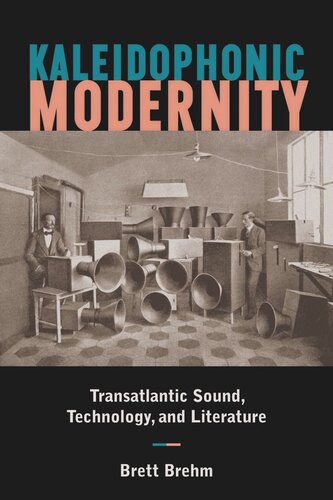

Most ebook files are in PDF format, so you can easily read them using various software such as Foxit Reader or directly on the Google Chrome browser.
Some ebook files are released by publishers in other formats such as .awz, .mobi, .epub, .fb2, etc. You may need to install specific software to read these formats on mobile/PC, such as Calibre.
Please read the tutorial at this link: https://ebookbell.com/faq
We offer FREE conversion to the popular formats you request; however, this may take some time. Therefore, right after payment, please email us, and we will try to provide the service as quickly as possible.
For some exceptional file formats or broken links (if any), please refrain from opening any disputes. Instead, email us first, and we will try to assist within a maximum of 6 hours.
EbookBell Team

4.8
64 reviewsWhat stories remain hidden behind one of the most significant inventions of the nineteenth century? Kaleidophonic Modernity reexamines the development of mechanical sound recording technology by charting the orbits of writers, scientists, and artists in France and the United States. Working between comparative literature, the history of science, and urban studies, Brehm builds a bridge between visual culture and sound studies.
Kaleidophonic Modernity places the poet and inventor Charles Cros and his lover, the celebrated concert pianist and salonnière Nina de Villard at the heart of modern aesthetic and scientific vanguards. Cros's scientific endeavors ranged from color photography, to telecommunications, to mechanical sound reproducibility. In his poetry the Surrealists found an ancestor and inspiration. His literary and scientific works prove startling and relevant to predicaments of technological media in his own time and ours. For nearly twenty years Nina de Villard presided over a supremely daring intellectual salon. There, she welcomed manifold literary, artistic, and musical luminaries into a veritable crucible of the artistic avant-garde and precursor to the famous Chat Noir cabaret. Together, these two forgotten but pivotal figures, Cros and Villard, help reframe our thinking on Edgar Allan Poe, Charles Baudelaire, and Walt Whitman, icons of urban modernity who can now be seen and heard in a kaleidophonic light, one that offers a compelling new perspective on modern mediascapes.
In elaborating this transatlantic phenomenon, Kaleidophonic Modernity illuminates the prehistory of the phonograph as it intersects with the aesthetics of sound reproducibility, Franco-American literary exchange, Poe’s aesthetic and intellectual legacy, the sounds of modern cities and technologies, and the genealogy of audiovisual experimentation found in such movements as Dada, Futurism, and the sound art of today.
A compelling account of two forgotten but pivotal figures in the development of modern audiovisual media technologies and their connections to influential artistic and scientific circles in nineteenth-century Paris and New York.